-
 Shot down in 1942, young Australian fighter pilot John Williams DFC became a POW in the notorious Stalag Luft III camp in Germany. John had joined the air force shortly before the outbreak of war and, in the larrikin tradition, led his squadron into air combat over the deserts of Libya and Egypt dressed in sandals and shorts. John and his best mate Rusty Kierath were among the 76 POWs who tunnelled their way out of the supposedly escape-proof camp under the noses of their German guards in what later became the Hollywood blockbuster, The Great Escape. Their families never learned what really happened once the pair made it out into the forest. John's niece Louise Williams has pieced together his life, from his upbringing in a tight-knit family hit hard by the Depression, to his exploits in the air, and the many missing details of the tragic escape. It is a powerful and intimate story of one of the most dramatic episodes of World War II. Illustrated with black and white photographs.
Shot down in 1942, young Australian fighter pilot John Williams DFC became a POW in the notorious Stalag Luft III camp in Germany. John had joined the air force shortly before the outbreak of war and, in the larrikin tradition, led his squadron into air combat over the deserts of Libya and Egypt dressed in sandals and shorts. John and his best mate Rusty Kierath were among the 76 POWs who tunnelled their way out of the supposedly escape-proof camp under the noses of their German guards in what later became the Hollywood blockbuster, The Great Escape. Their families never learned what really happened once the pair made it out into the forest. John's niece Louise Williams has pieced together his life, from his upbringing in a tight-knit family hit hard by the Depression, to his exploits in the air, and the many missing details of the tragic escape. It is a powerful and intimate story of one of the most dramatic episodes of World War II. Illustrated with black and white photographs. -

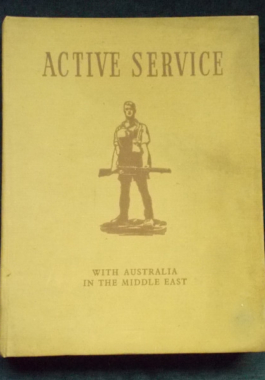 An illustrated notebook on the life of Australians in the Middle East theatre of war. Almost all of the contents are the work of men on active service, as well as reports on most of the action in which Australian forces had taken part up until 1941. With black and white and colour illustrations as well as black and white photographs, contents include: "Little Syd"; Hitler In London; Life In The 'Octu'; Visit To A 'Kibbutz'; Ernie Was A Cook and many more. There's comical articles and musings, men interested in the exotic life around them - and poems that define the yearning for home and loved ones.
An illustrated notebook on the life of Australians in the Middle East theatre of war. Almost all of the contents are the work of men on active service, as well as reports on most of the action in which Australian forces had taken part up until 1941. With black and white and colour illustrations as well as black and white photographs, contents include: "Little Syd"; Hitler In London; Life In The 'Octu'; Visit To A 'Kibbutz'; Ernie Was A Cook and many more. There's comical articles and musings, men interested in the exotic life around them - and poems that define the yearning for home and loved ones. -

Douglas MacArthur 1880-1964. Inspiring, outrageous, brave, egotistical... A thundering paradox of a man. Douglas MacArthur, one of only five men in history to have achieved the rank of General of the United States Army. He served in World Wars I and II and the Korean War, and is famous for stating that "in war, there is no substitute for victory." This is an examination of an exemplary army career, the stunning successes (and lapses) on the battlefield, and the turbulent private life of the soldier-hero whose mystery and appeal created a uniquely American legend. Illustrated with black and white photos.
-

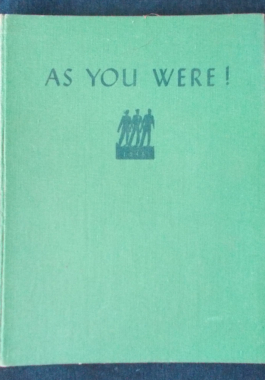 A Cavalcade of Events with The Australian Services from 1788 to 1946. Articles and notes; art and jokes; poetry and cartoons... from the servicemen - and even some of the women - who were there. This is no dry history of battles and dates - it's a memorial to all those fallen in war. Just some of the items in this volume: The Blood-bath at Cowra, E.V. Timms; When Sydney Fought A Zeppelin, 'Matelot'; Bless 'Em All, Biddy Moriarty (Australian Red Cross); Stout Hearts That Never Failed, Ion Idriess; A Service Girl In Japan, A.J. Poppins; and much more, together with art and photographs in black and white and colour - and of course, some typical Australian irreverent cartoons.
A Cavalcade of Events with The Australian Services from 1788 to 1946. Articles and notes; art and jokes; poetry and cartoons... from the servicemen - and even some of the women - who were there. This is no dry history of battles and dates - it's a memorial to all those fallen in war. Just some of the items in this volume: The Blood-bath at Cowra, E.V. Timms; When Sydney Fought A Zeppelin, 'Matelot'; Bless 'Em All, Biddy Moriarty (Australian Red Cross); Stout Hearts That Never Failed, Ion Idriess; A Service Girl In Japan, A.J. Poppins; and much more, together with art and photographs in black and white and colour - and of course, some typical Australian irreverent cartoons. -
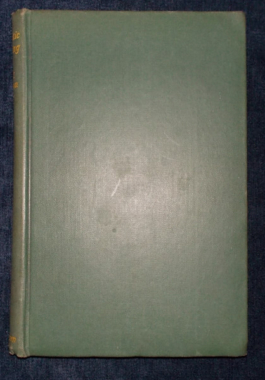
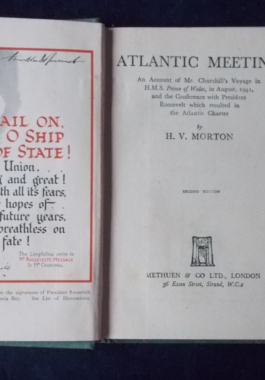 An account of Churchill's voyage in August 1941 on the Prince of Wales and his meeting with President Roosevelt, the outcome of which was the Atlantic Charter.
An account of Churchill's voyage in August 1941 on the Prince of Wales and his meeting with President Roosevelt, the outcome of which was the Atlantic Charter. -

Australia was almost defenceless against Japanese attack in 1942. Here it is suggested that vital lessons for today can be learnt from that period. Did the Australian leaders rely too heavily on Britain and were they let down? How much can Australia rely on any country for support in wartime? From the days of the First Fleet it was always accepted that the United Kingdom would send its fleet to defend Australia. For this reason Australia sent troops overseas as early as 1885 to help fight Imperial wars. The situation changed after 1918 for then Japan became a likely enemy. Could Britain defend Australia from attack and conduct a war in Europe? Dr. McCarthy examines both sides of the question and concludes that it was never possible.
-
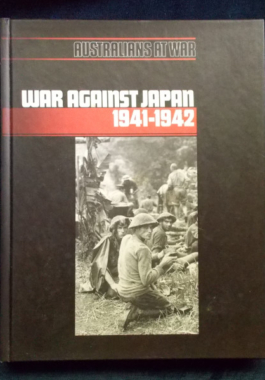 Time-Life series Australians At War, Volume 1. In South East Asia the European colonists lived an indolent life while to the north, the Japanese marched hungrily to war. In Singapore and up-country Malaya, there was still time for socialising and for serving officers to deck themselves out in their mess-dress finery for balls and dances, and for their wives to enjoy all the comforts that colonial service and a strong pound sterling could bring. Garrison life was an endless round of parties, parades and presentations at Government House. But with the splendour, there was a blind refusal in London and the Far East to see just how expansionist and bellicose the Japanese really were. Lavishly illustrated with archival black and white photographs and colour reproductions of contempory art.
Time-Life series Australians At War, Volume 1. In South East Asia the European colonists lived an indolent life while to the north, the Japanese marched hungrily to war. In Singapore and up-country Malaya, there was still time for socialising and for serving officers to deck themselves out in their mess-dress finery for balls and dances, and for their wives to enjoy all the comforts that colonial service and a strong pound sterling could bring. Garrison life was an endless round of parties, parades and presentations at Government House. But with the splendour, there was a blind refusal in London and the Far East to see just how expansionist and bellicose the Japanese really were. Lavishly illustrated with archival black and white photographs and colour reproductions of contempory art. -
 Since the defeat of the Spanish Armada in 1588, the British people have confronted no greater threat to their freedom than in 1940, when Hitler's armies swept through France in a few scant weeks and stood poised twenty-one miles from Dover. Had the Luftwaffe then gained air supremacy over the English Channel, nothing could have prevented the first invasion of Britain in over 900 years. This is the story of how Britain turned the prevailing tide, against all the odds - and won the day. Illustrated with photographs from private collections, drawings, diagrams and charts that clarifies the day by day events on both sides accompanied by text from witnesses and combatants that evoke those few desperate weeks of human endeavour and how the delicate balance was tipped - only just - in Britain's favour.
Since the defeat of the Spanish Armada in 1588, the British people have confronted no greater threat to their freedom than in 1940, when Hitler's armies swept through France in a few scant weeks and stood poised twenty-one miles from Dover. Had the Luftwaffe then gained air supremacy over the English Channel, nothing could have prevented the first invasion of Britain in over 900 years. This is the story of how Britain turned the prevailing tide, against all the odds - and won the day. Illustrated with photographs from private collections, drawings, diagrams and charts that clarifies the day by day events on both sides accompanied by text from witnesses and combatants that evoke those few desperate weeks of human endeavour and how the delicate balance was tipped - only just - in Britain's favour. -
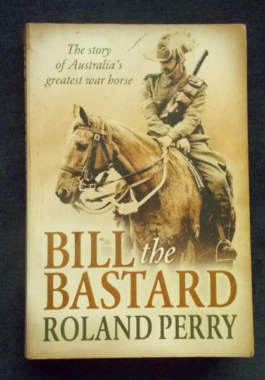 Bill was massive. He had power, intelligence and unmatched courage. In performance and character, he stood above all the other 200,000 Australian horses sent to the Middle East in the Great War. But as war horses go, he had one serious problem. No one could ride him but one man, Major Michael Shanahan. Some even thought Bill took a sneering pleasure in watching would-be riders hit the dust. This is a remarkable tale of a bond between a determined trooper and his stoic but cantankerous mount. They fought together. They depended on each other for survival. And when the chips were down, Bill's heroic efforts and exceptional instincts in battle saved the lives of Shanahan and four of his men. By September 1918, 'Bill the Bastard' was known by the entire Light Horse regiment, who used his name not as an insult, but as a term of endearment. Bill had become a legend, a symbol of the courage and unbreakable will of the Anzac mounted force. There was no other horse like Bill the Bastard.
Bill was massive. He had power, intelligence and unmatched courage. In performance and character, he stood above all the other 200,000 Australian horses sent to the Middle East in the Great War. But as war horses go, he had one serious problem. No one could ride him but one man, Major Michael Shanahan. Some even thought Bill took a sneering pleasure in watching would-be riders hit the dust. This is a remarkable tale of a bond between a determined trooper and his stoic but cantankerous mount. They fought together. They depended on each other for survival. And when the chips were down, Bill's heroic efforts and exceptional instincts in battle saved the lives of Shanahan and four of his men. By September 1918, 'Bill the Bastard' was known by the entire Light Horse regiment, who used his name not as an insult, but as a term of endearment. Bill had become a legend, a symbol of the courage and unbreakable will of the Anzac mounted force. There was no other horse like Bill the Bastard.


